In-Depth: Why the TAG Heuer CH80 (now named Heuer-03) comes back? (and a visit of the relaunched Chevenez Manufacture)

One week ago, we introduced to you the first prototype of the TAG Heuer Autavia “Jochen Rindt” reedition, one of the first customer-designed watches made by the industry in a long time. That’s already a good news on its own, and this watch was not the only point of interest, as inside its case ticks something we didn’t expect to see anymore from TAG Heuer: the Calibre Heuer-03 (previously calibre CH80 that was supposed to be a project ‘killed’ before its birth). During the Heuer collectors summit, we had the chance to visit the Chevenez Manufacture (the one that was supposedly stopped), to see the new movement, to understand the evolutions and finally to talk with the teams, including Jean-Claude Biver, just to shed some light on this complex but, in the end, happy situation.
Background
What happened at TAG… Didn’t stay at TAG! Why? The fact that TAG Heuer is a large company, owned by a publicly listed group (LVMH), made the situation public (such situations happen more often than you think in the industry, but are usually kept secret). What happened… End of 2013, TAG Heuer announced a new movement, the Calibre 1969, an in-house developed and technically interesting engine – column-wheel, 70 hours power reserve, vertical clutch, integrated automatic chronograph, try-compax display. A piece of news praised by journalists and collectors, and even more when, at Baselworld 2014, TAG Heuer presented the first watch with this movement, a new retro-inspired Carrera. They even renamed the movement in CH80 and improved the specs (more power reserve, now at 80 hours). That looked promising!
TAG Heuer CH80 – presented in 2014, but never went into production
You see, TAG Heuer certainly overestimated its capacities and probably underestimated a difficult conjuncture of the market. The conjunction of these two factors, linked to the fact that TAG Heuer already had an in-house movement in its collection, the Calibre Heuer 1887, didn’t help the brand to launch the CH80. Later in 2014, in June (only 3 months after the presentation of the Carrera CH80), the brand postponed this watch and its movement. At that time already, we made a first analysis of the situation, stating that the arrival of Jean-Claude Biver, as Head of Watchmaking at LVMH Group (not yet CEO of TAG Heuer), the difficult situation of sales and the too ambitious CH80 movement were certainly reasons for postponing. TAG Heuer, for a few years, went up in terms of prices, changing the original market and vocation of the brand – young, innovative, accessible. The Calibre CH80 was creating an even wider gap with the original segment of TAG Heuer.
The TAG Heuer CH80 that has been dismissed
Later again, in December 2014, the CEO of TAG Heuer, Stéphane Linder, resigned from his position and will later be replaced by Jean-Claude Biver (JCB). Immediately after his arrival, JCB changed the product / production strategies, because he saw major issues. The Chevenez production site, entirely dedicated to the production of in-house movements (1887 and CH80) has seen its production slowed down drastically. What was not especially clear at that time is now explained, by Mister Biver himself. When arriving there, he saw that stocks of the 1887 were quite enormous and before launching the CH80, these older movements had to be sold, one way or another. The finances had to be cleaned and the production re-centered. For that, JCB and the teams at TAG created the Carrera Heuer 01, powered by a partially skeletonized version of the 1887. Helped by the success of this watch, the production at Chevenez could come back to larger volumes.
The TAG Heuer Calibre Heuer-03 to succeed to the CH80
So, what is the main piece of news of this article? Well, to make it simple, TAG Heuer has a new movement, which will be first introduced in the new Autavia 2017 that we exclusively reviewed for you here, way before it will be launched (expected for Baselworld 2017). Indeed, this watch will come with the Calibre Heuer-03. We said brand new movement? Well… not entirely. In fact, this Heuer-03 is based on the postponed / killed / never produced Calibre CH80. In fact, this is not really the re-introduction of this movement, as the Heuer-02T Tourbillon is based on that same calibre. However here, we are in front of a classical chronograph and that is much more important in terms of production, sales and products.
The 2017 TAG Heuer Autavia reedition
What is the Heuer-03? Basically, it is a Calibre CH80. The fundamentals are here: the gear train, the supply of energy (said to be 80 hours in the CH80, but it’s not yet defined for the Heuer-03, as the manufacture needs to perform long time tests to validate the length of the power reserve… however expect between 70 and 80 hours), the chronograph mechanism (same column-wheel / vertical clutch architecture, so-to-say, the best technical solution possible, offering a smooth and precise command of the chronograph functions), the automatic system, the 3-6-9 layout, the date display. The frequency is still a modern 4Hz and the movement still comprises 33 jewels. The only question concerns the precision, as the CH80 was supposed to be COSC-Certified, while nothing has been said yet for the Heuer-03. Overall, when comparing the CH80 and the Heuer-03, we are talking 95% similarities.
What is different? Well, we haven’t seen the entire movement yet. At the moment I was visiting the manufacture and discussing with TAG Heuer’s head of production, a watchmaker was finishing the assembly of the movement and the oscillating mass was not even attached. However, this allowed me to have a more detailed view on the Heuer-03 itself. What we can see here, is that the technical elements are in the same position in the CH80 and the Heuer-03 (the column-wheel, the large notched wheel next to the TAG logo wheel, the balance and escapement…). However, two visible differences: the bridges are not cut the same way. The bridge on the right of the balance wheel is now more opened, leaving a free view on wheels. Same goes for the second main bridge, also more opened, with more graphic lines.
In terms of finishing, we can notice that TAG Heuer certainly decreased the details a bit, as the bridges seem to be rather industrially finished – not bevelled and polished like it seemed to be the case for the CH80. Personal Note: TAG Heuer, to me, is not a manufacture to create highly finished movements and if a more industrial finish can lead to a lower price (which is the case, as watches with the Heuer-03 will be cheaper than the ones with the CH80), I feel good with that. I prefer TAG to have an efficient movement rather than a highly finished one. We can also see a column-wheel coated in red. No details about the rotor, but it will certainly be dark grey plated.
When asked by Calibre 11 (colleagues of ours who focus entirely TAG Heuer) what are the changes on the Heuer-03 compared to the CH80, Jean-Claude Biver said “there are not so many changes. Of course there are a few changes but what is in the Autavia is the final, definite version of what has started as the CH80. This is the final product. And this Heuer-03 will be used in the TAG Heuer model collection from 2018 on”. In fact, most of the changes have no effect on the product itself, but mainly concern the industrialisation process. The Heuer-03 is just slightly thicker, to allow for more robust wheels, improving reliability.
What to say about this movement? Well, while we haven’t tested it yet (the movement in the Autavia seen during these days was not operational), the specs sheet leave a good impression. The Heuer-03 has a modern architecture, some nice technical solutions, a power reserve that is comfortable and enough features to be a competitive offer, especially when considering the price of the watches equipped with it, which should be in the higher range for TAG, at around CHF 5,000 Swiss Francs, but still rather accessible compared to the competition.
Why a new in-house movement in the collection?
In a few months, TAG Heuer will have two automatic chronograph movements produced in-house, in the Chevenez manufacture. Two movements that actually look quite similar and not especially complementary. However, some facts have to be reminded about the Calibre 1887 / Heuer-01 movement. Even if TAG didn’t officially state it, the 1887 was not entirely developed in-house by the brand but was based on plans of the Seiko 6S37. As good as this movement is and even if it’s seriously updated by TAG, it means that flexibility on such a calibre is low. It was not developed from scratch with the idea to be implemented into a collection, to allowing easy modifications to adapt new complications. The other issue with a movement that has not been develop internally is that it can’t be perfectly adjusted to the production tool, meaning a longer assembly process. Finally, the 1887 has a 6-9-12 layout that looks like the Valjoux 7750 (not the best argument for an in-house produced movement) – clearly not in line with the retro-oriented pieces, where a 3-6-9 layout of the sub dials is more suitable. The Heuer-03 will answer all these issues.
A TAG Heuer Carrera Calibre Heuer 01 and its movement (based on the 1887)
What TAG has done with the Heuer-03 (previous CH80) is to create a movement that has the perfect layout for all watches (chrono, 3-hand, etc). Then, they improved the technical solutions, by having a movement with column-wheel and vertical clutch, as well as a long power reserve. Finally, this movement has been developed from scratch, at the same time as the production tool. TAG Heuer worked hard to have a movement that is easy to produce and to adjust. It is composed of modules – regulating organ, main-plate and gear train, chronograph plate, automatic winding plate – which means these modules can be produced seperately. TAG won’t have to produce complete movements, but could work on some modules, stock them, then pickup in this stock to easily assemble movements.
The second positive effect is about this modularity. This construction in “areas” (the movement remains an integrated chronograph, not a 3-hand movement with a module) will allow to create variations easily, with low investments. For instance, creating a manual winding version is possible. Changing the regulating organ too, for a tourbillon for instance (and it will give you the Heuer-02T). This was not possible with the 1887, which is a movement made to be an automatic chronograph only, and which must be assembled from A to Z. The Heuer-03 is meant to be the central point of the new collections, as it will offer various extensions.
The complex assembly of the Heuer-01 / 1887 Calibre
The idea is a rationalisation of the production and of the investments. TAG Heuer is like all companies over the world: they need to be efficient and to create margins. The Heuer-03 will certainly become the main option for TAG Heuer chronograph watches in the coming years, slowly replacing, or at least overpassing the 1887 – like JC. Biver said to Calibre 11 (see here) “It will at first not replace the Heuer-01, it will come to be a traditional chronograph version but it could well be that by 2020 we would produce double or triple the number of Heuer-03 than the Heuer-01“. This Heuer-03 movement allows to have a watch like the Autavia priced bellow the CHF 5,000 Swiss Francs barrier – while it is the price of a Monaco Calibre 11 or a Carrera Calibre 18, both vintage-inspired pieces too but powered by modular ETA movements, not with an in-house column-wheel chronograph.
The Production site of the Heuer-01 and Heuer-03 – Chevenez
First of all, I want to bring the light on something important. Yes, TAG Heuer produces most of the parts of a watch, movement included, in Switzerland. During the Heuer collector summit, we had the chance to visit 3 production sites: La Chaux de Fonds (design, development, assembly, testing), Cornol (case manufacture) and Chevenez (movements, now mainly the 1887 / Heuer-01 but the Heuer-03 will join soon). Yes, most of the parts are machined there (some not, like balance wheels and anti shocks, but like most brands) and yes the assembly and testing is done in-house – as for the development of movements. No debate here, TAG Heuer watches with manufacture movements are proper Swiss Made watches – including the 15,000 Swiss Francs tourbillon Heuer-02T. Back to Chevenez now.
For a modern movement, you need a modern manufacture. This was the goal of Chevenez: a brand new, technically advanced manufacture to produce modern movements. Don’t expect here the beauty of old-school manufactures, where parts are done and finished by hand. Chevenez, like most mainstream brands’ manufactures, is an industrial production site. However, this is far from being bad. Everything starts with the machining rooms, where plates and bridges are produced on CNC machines, or where wheels, pinions and screws are cut.
Once the parts machined comes the operations of finishing: cleaning of the parts (to remove the asperities of the machining process), beveling, Geneva stripes, several surface finishings (perlage, soleillage, circular graining of the wheels) engravings of the logos and inscriptions. Then the plates and bridges are “jeweled” – a process called empierrage, when the bridges and plates receive the rubies. Once all the parts are prepared can come the final assembly.
Chevenez is a modern manufacture. We’re not in the “one watchmaker, one movement” process but rather on “industrial stages”. Movements are mounted on supports and then guided by rails, traveling from one workplace to another. At each step, a watchmaker receives a movement and he/she has to complete several tasks and assemble several parts, before this step is being controlled. The movement then moves to another workplace to undergo other processes and to receive some other parts, before it will be entirely assembled. The final stage is of course the control.
All together, Chevenez might not be the sexiest manufacture we’ve seen. Of course, we are far from Philippe Dufour’s atelier but this type of industrial production is what you’ll find for most watches under 10,000 Euros – and sometimes assembly is even more machine-driven than that, we can guarantee you. TAG Heuer has here a strong tool, which can evolve and that will evolve soon, when the Heuer-03 will enter in production. Future seems brighter now at TAG and further developments are coming. Refreshing and enjoyable.
More details on: www.tagheuer.com.

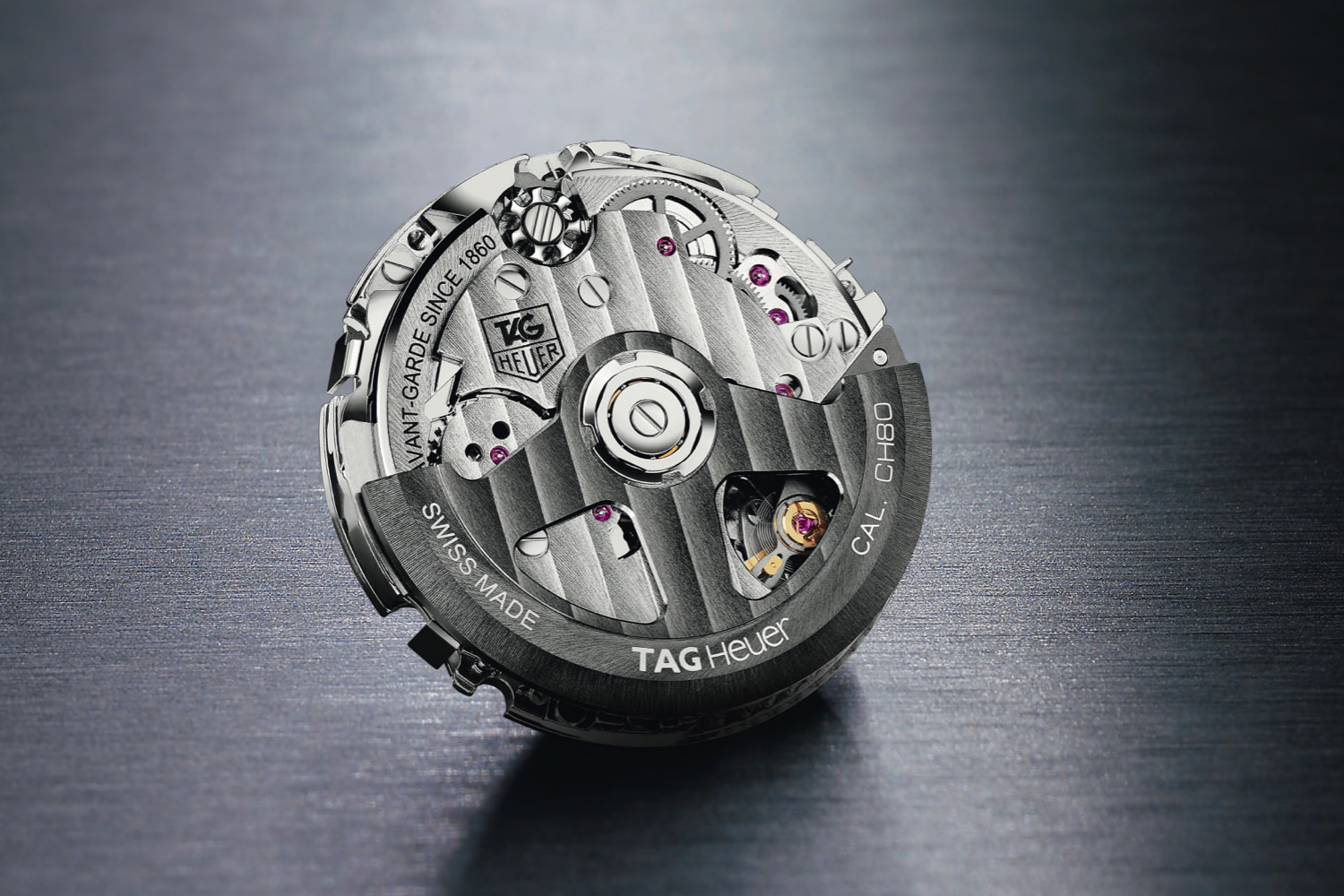
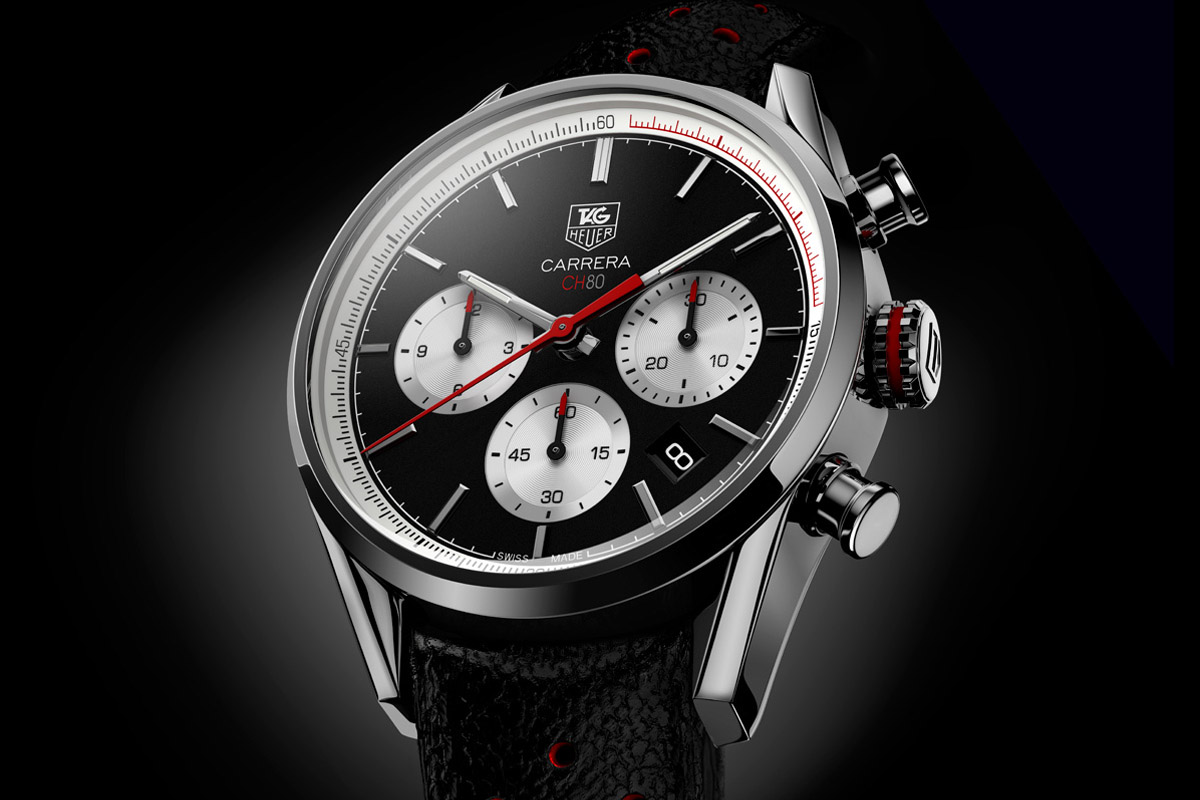
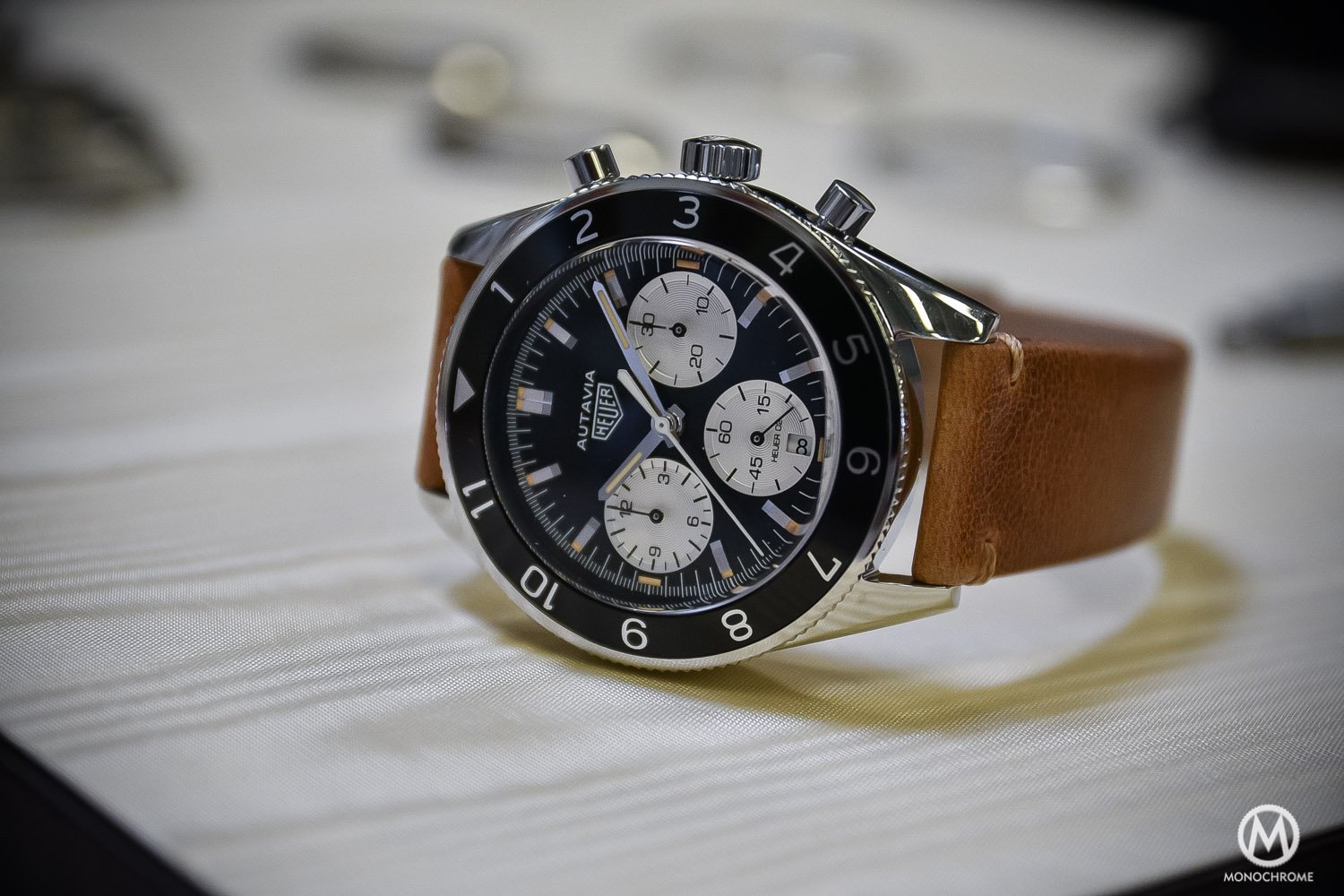

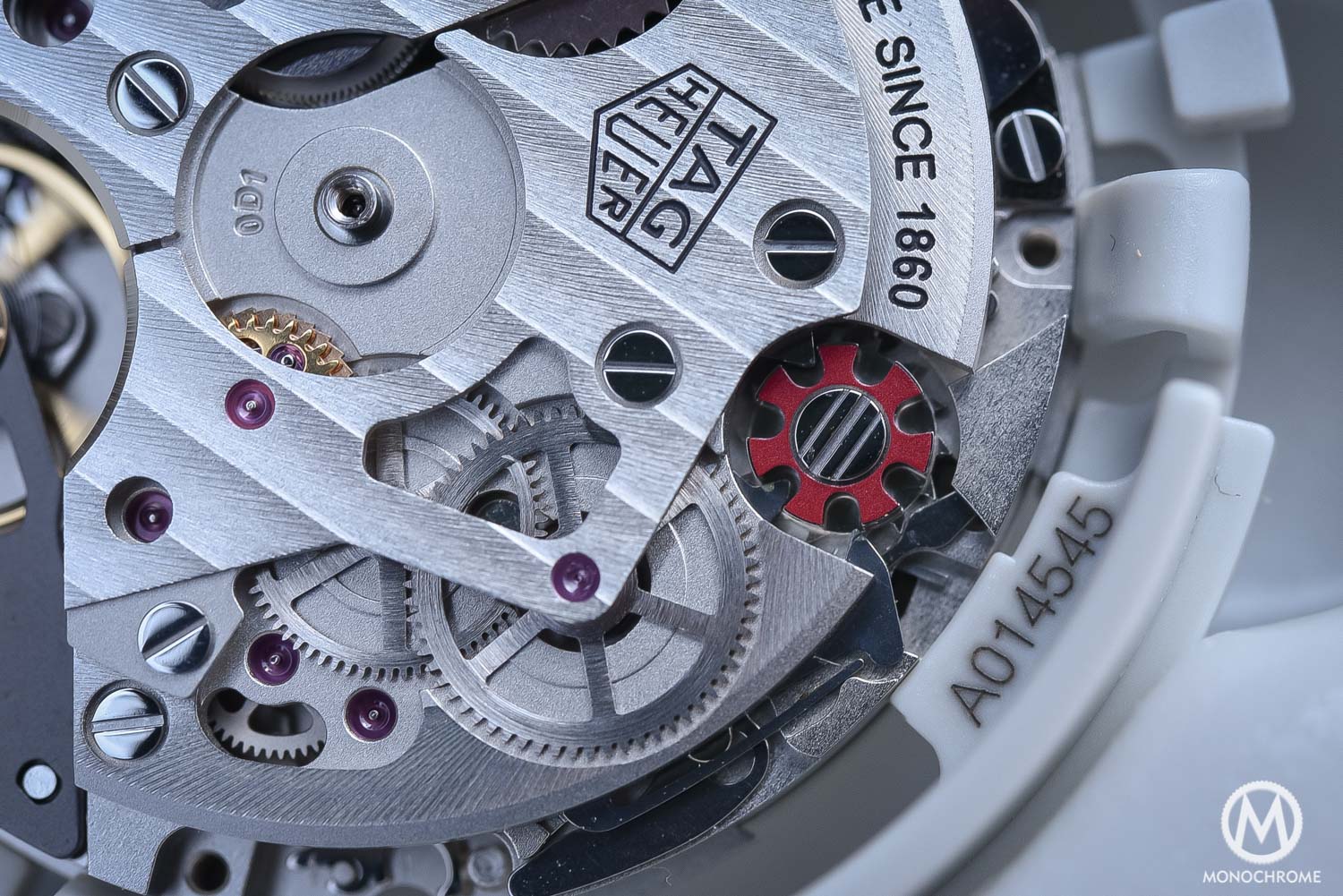
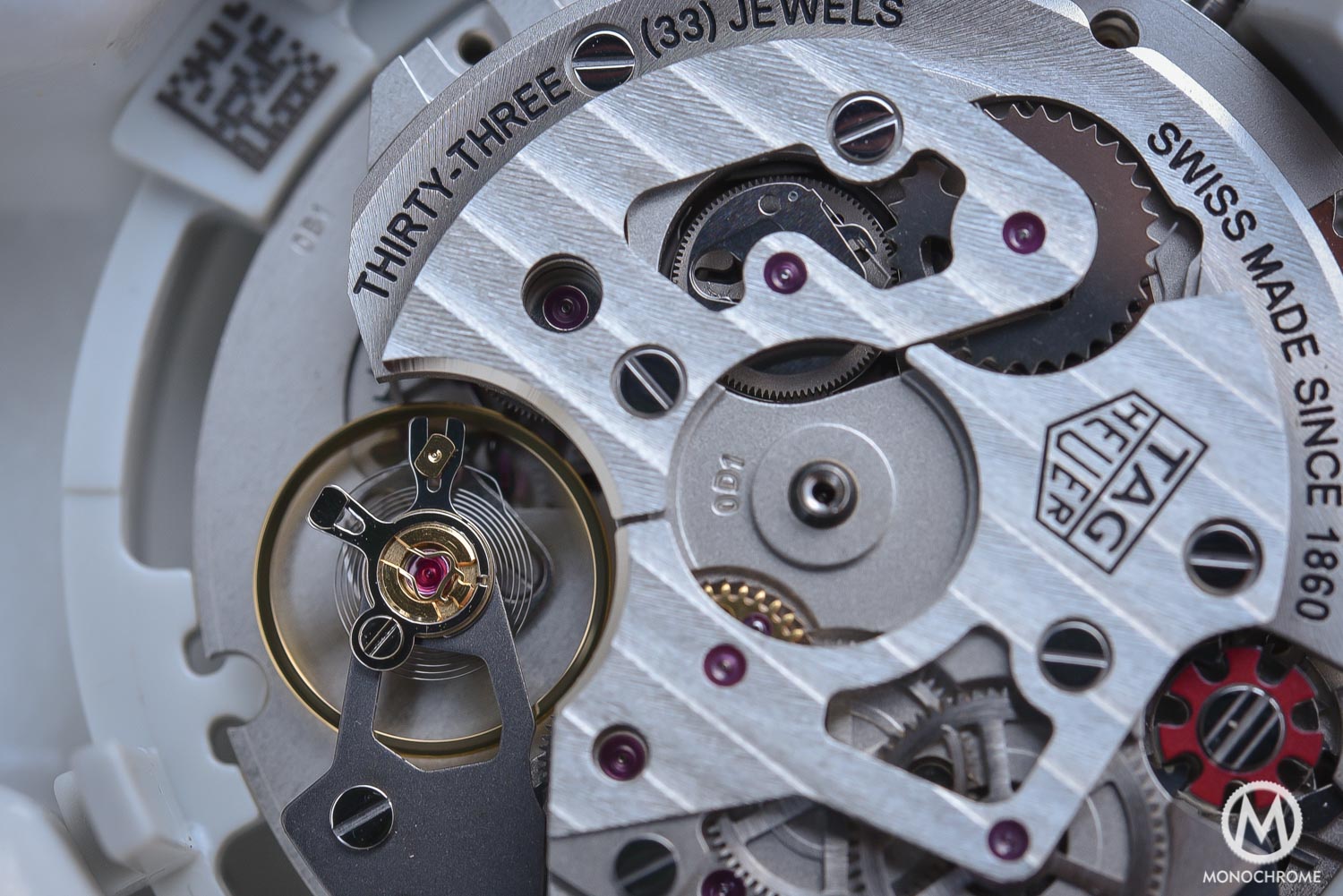
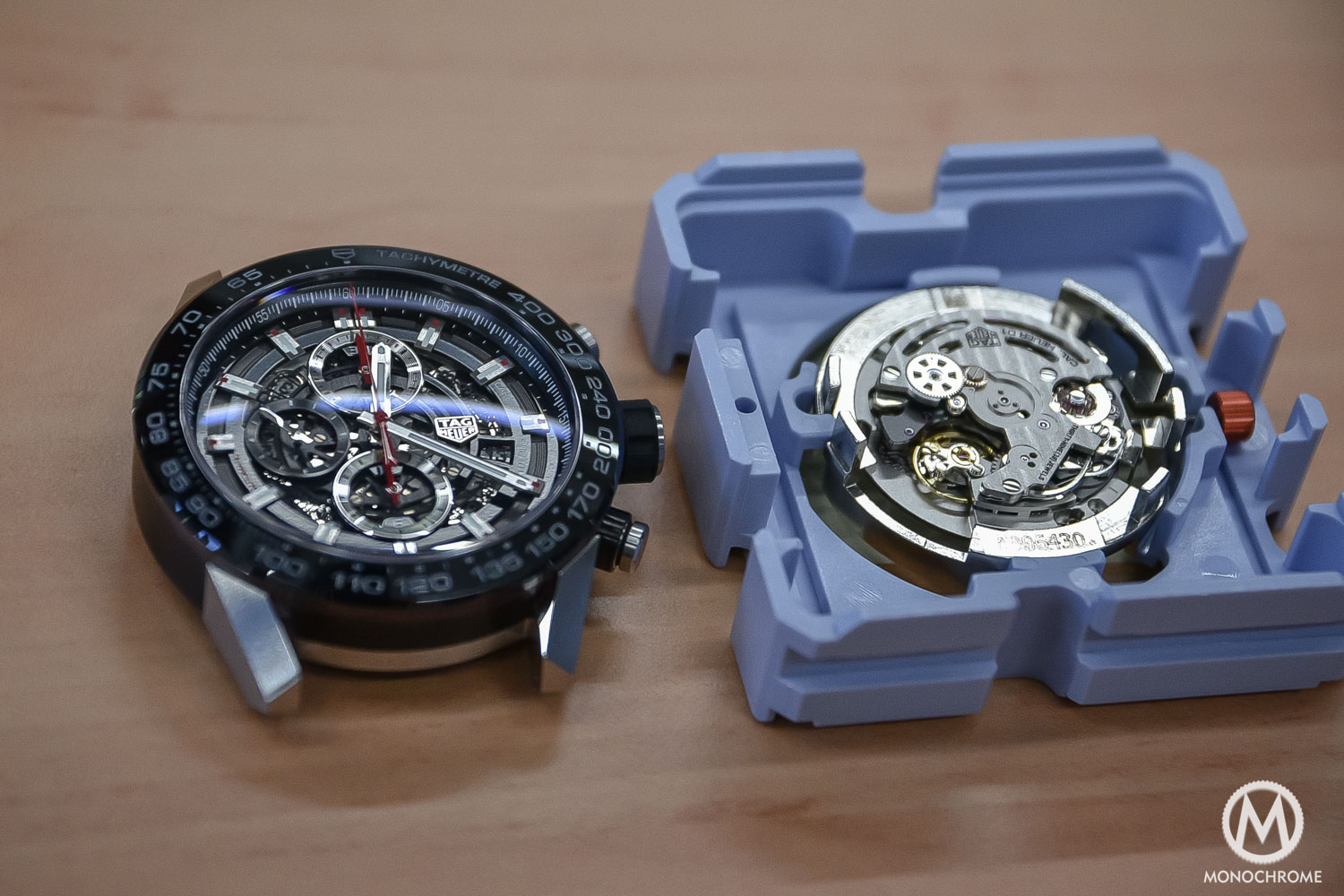


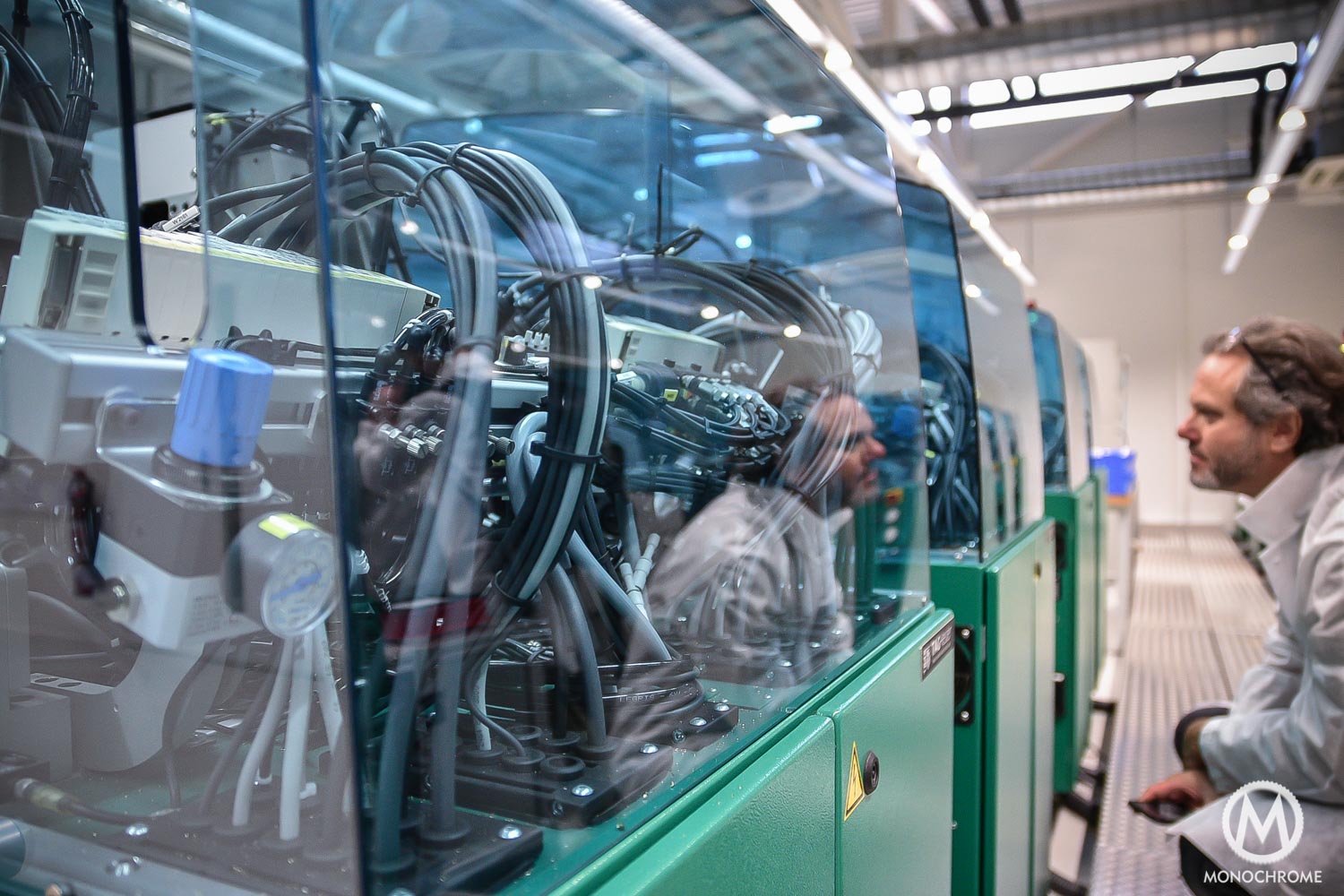
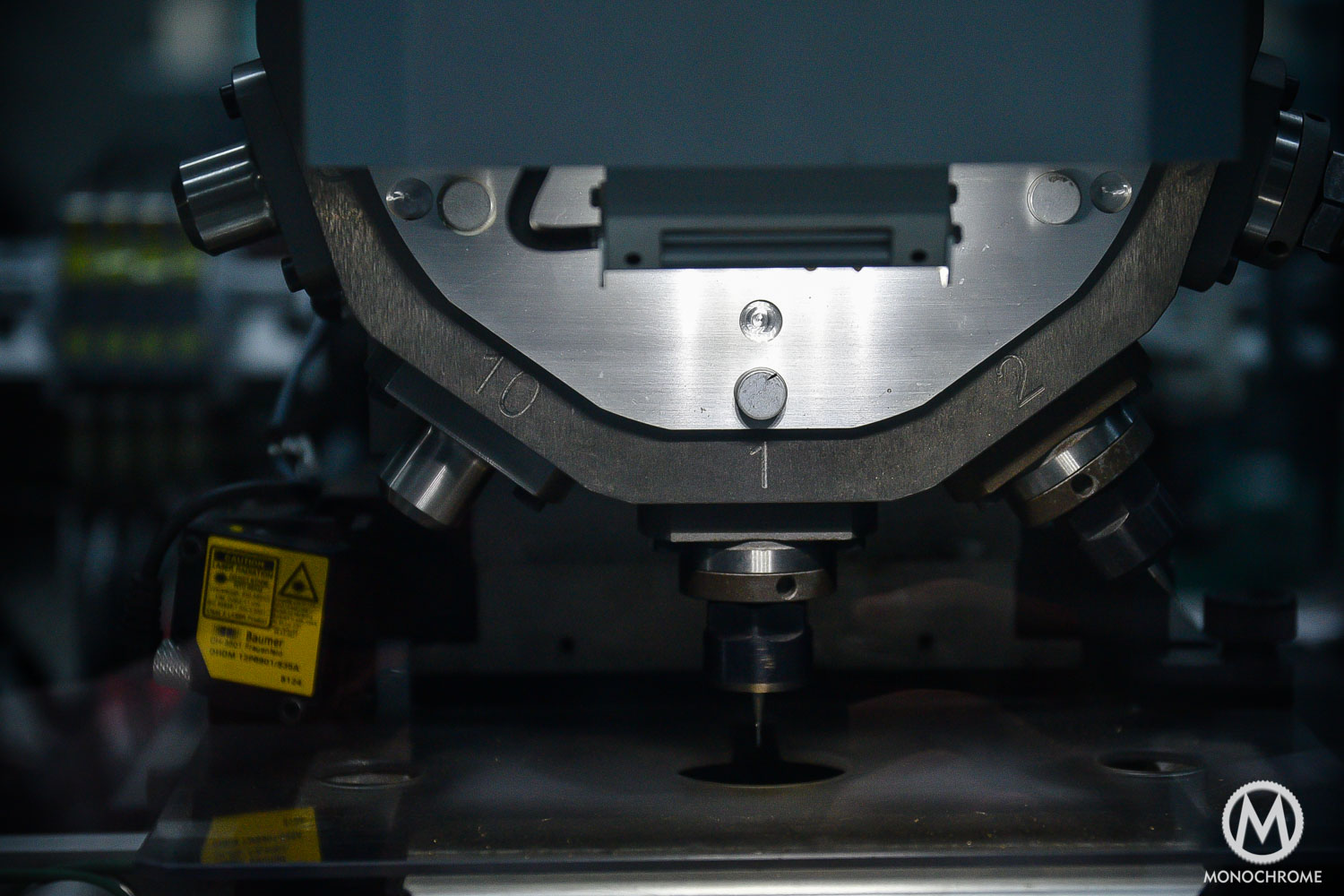
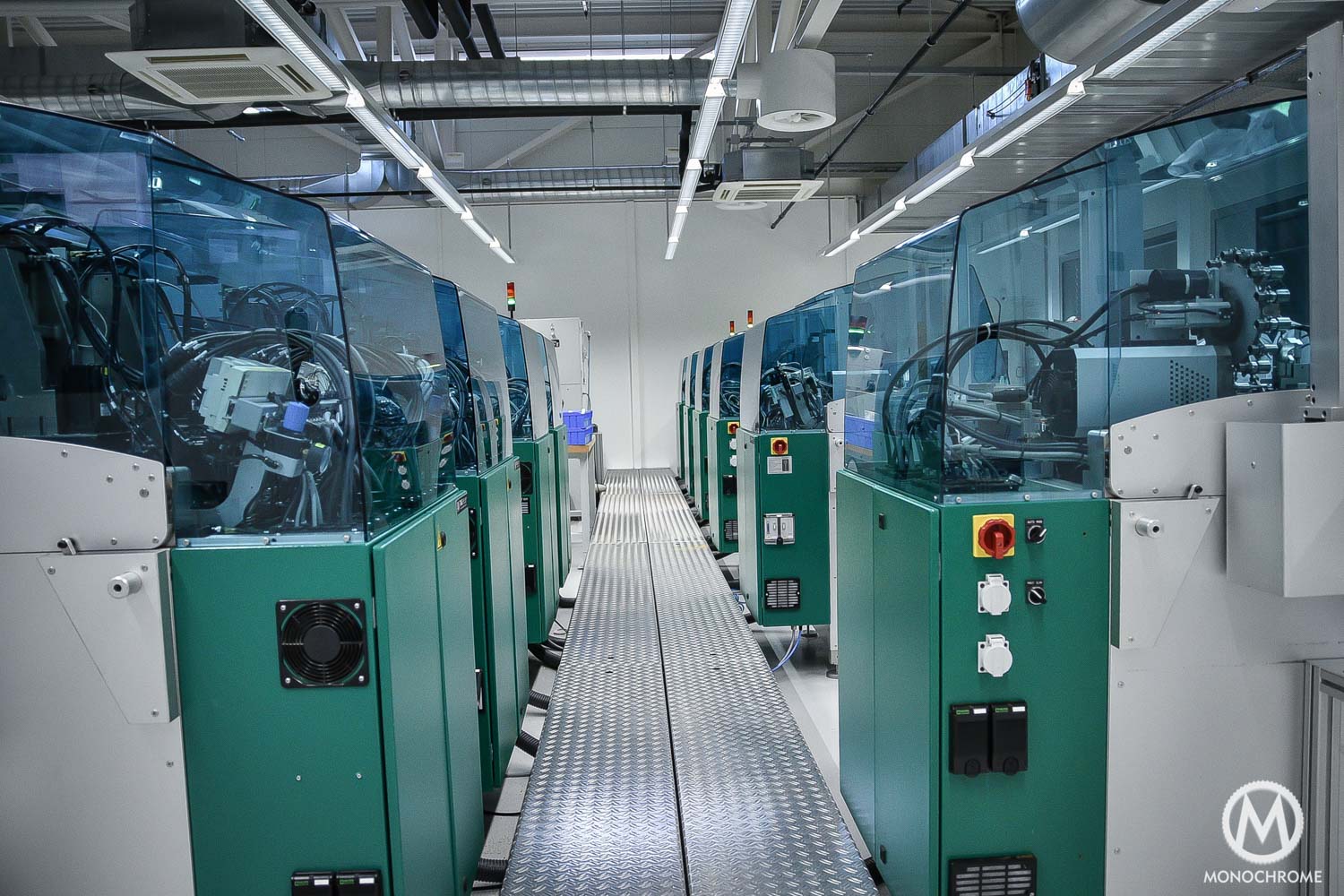

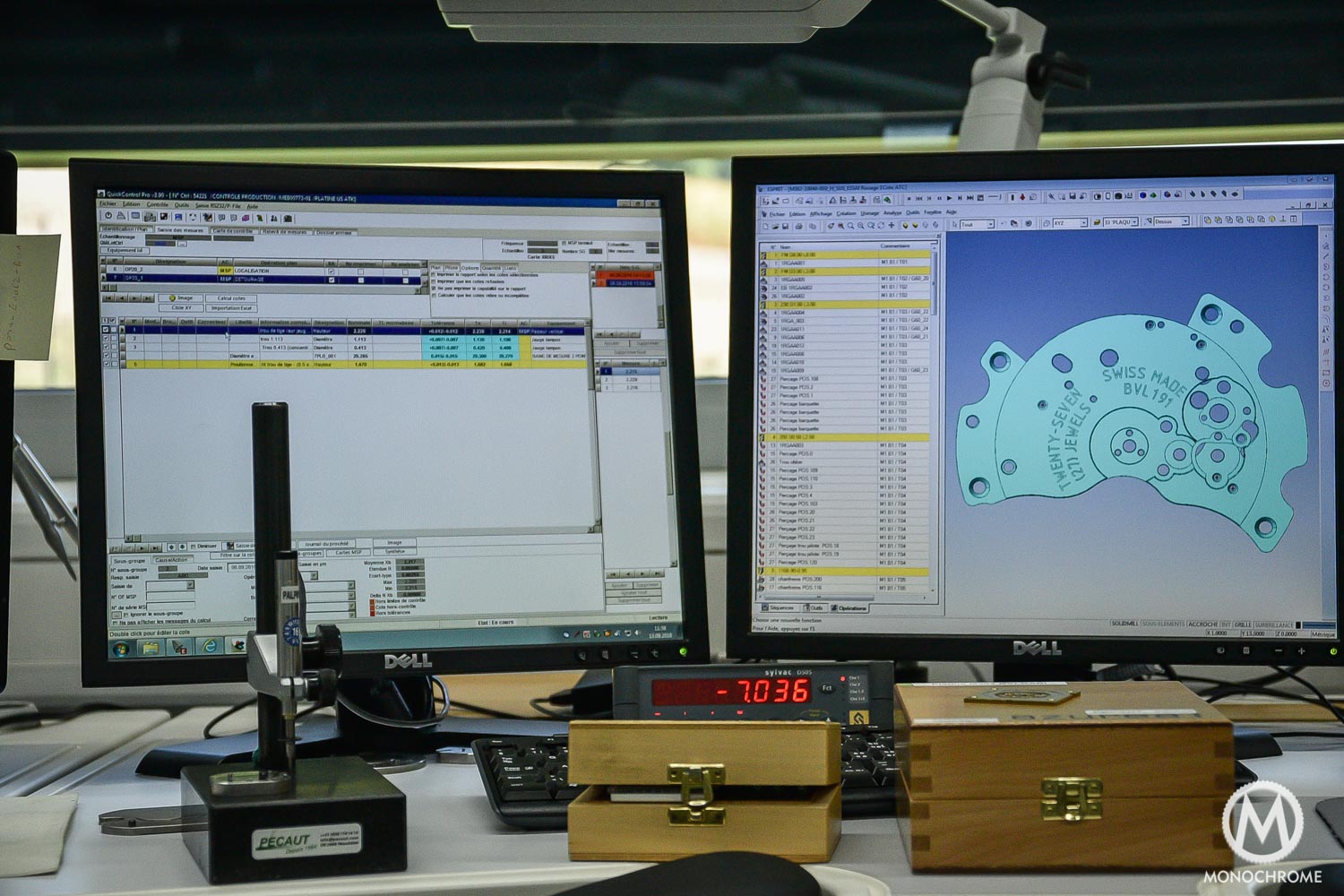
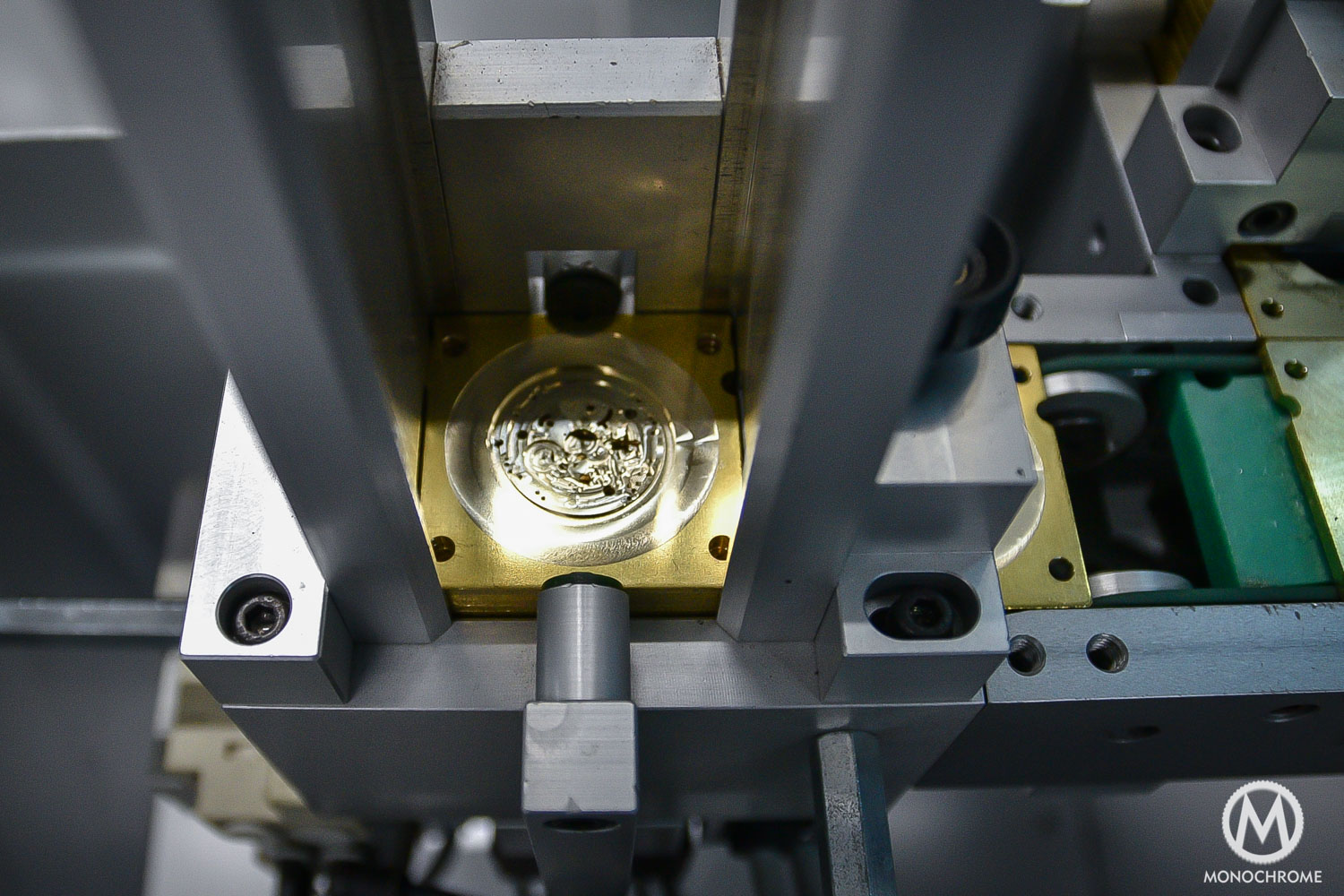
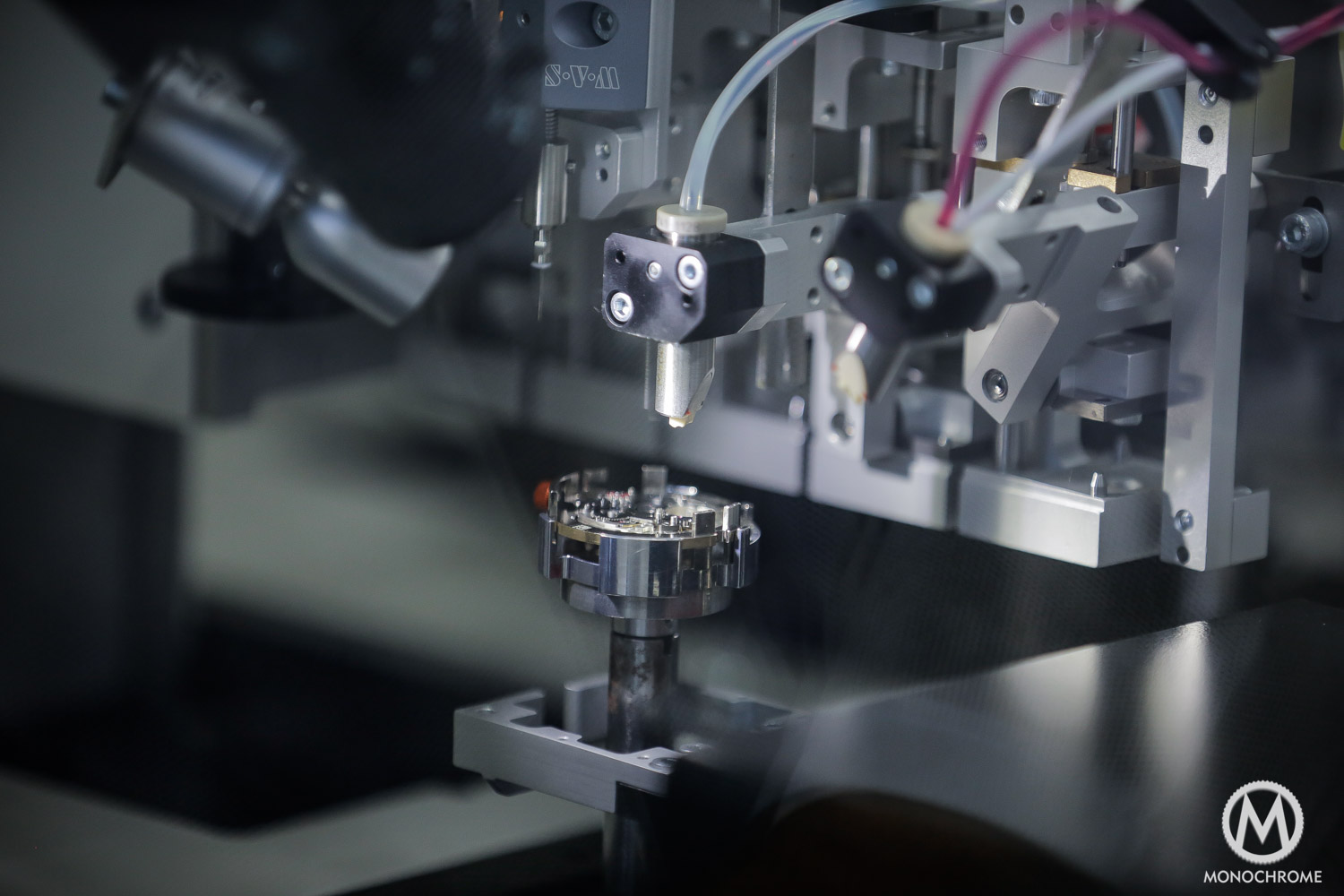
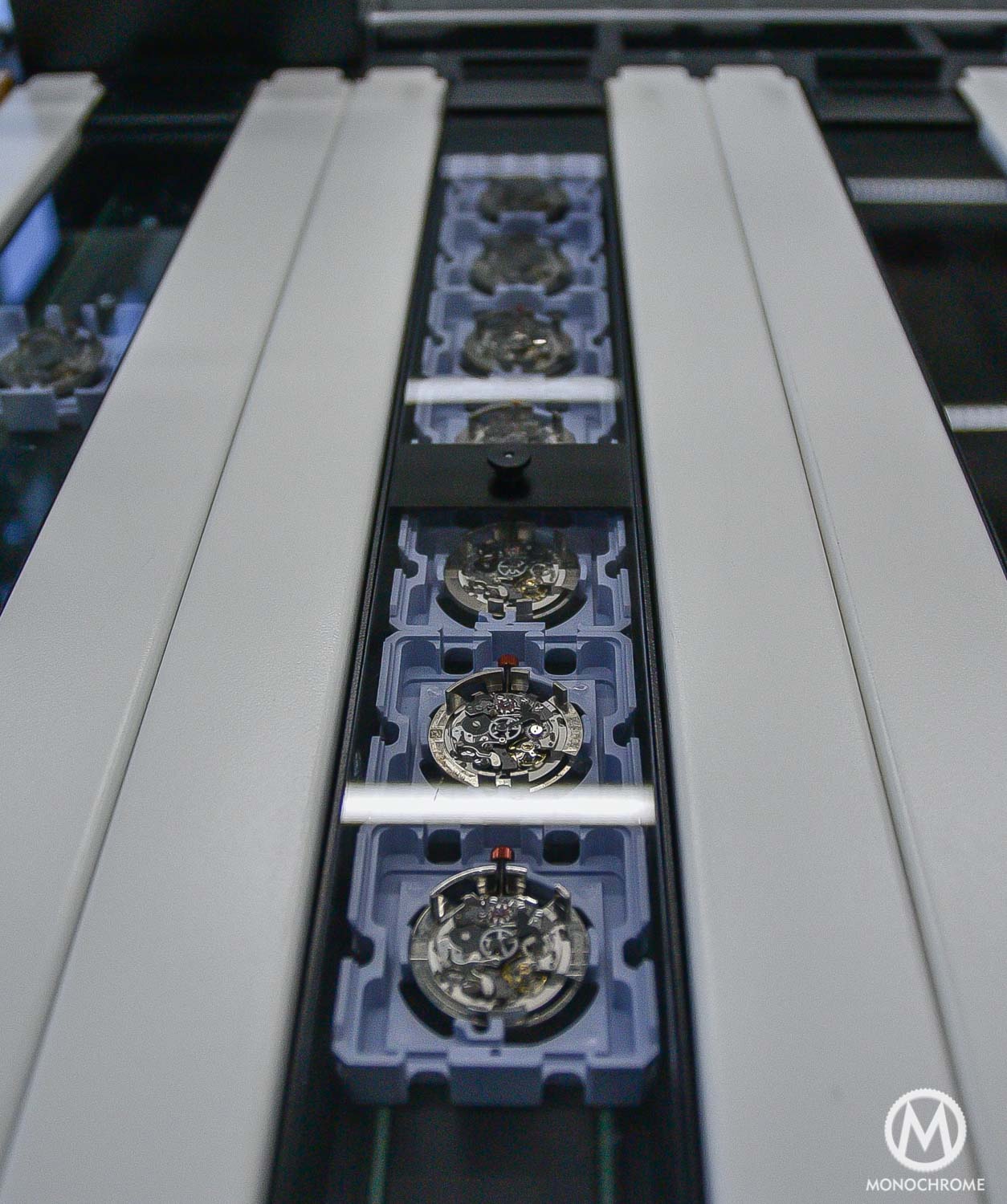
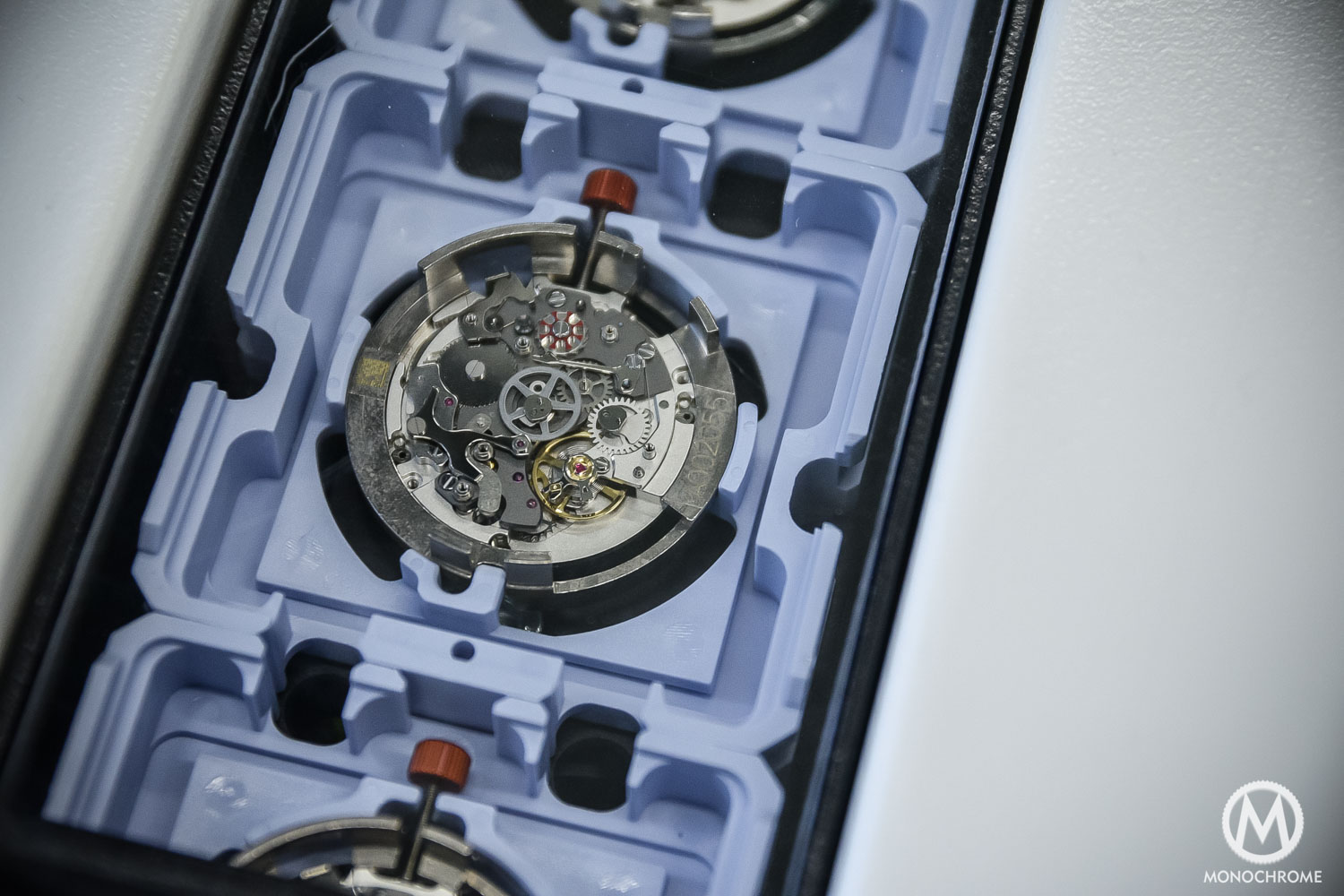



3 responses
Hi Brice,
thanks for your report. Finally we know something more about TH calibres. To me there’s not much clarity on this topic (calibers) in general and especially for what concern Tag Heuer…I still remember what happened when the 1887 was introduced as full in-house caliber and then they had to change such statement…not a good move. Clarity and transparency are always good policies – even in marketing.
Also, it is interesting to see how a luxury brand can industrialize its production with modern tooling machines.
As a guitar collector, I’ve always been on a ..pendulum 🙂 between perfectly done, fully reliable instruments (industrially machined) or soulful, hand made instruments (that often are not-so-perfect). I came to the conclusion that each instrument have its place and time.
Same is for watches.
Just my two cents,
regards,
slide68
Thanks very much for the insightful and enjoyable tour through the Tag Heuer facility. I currently own two different models of the Autavia from the 1970’s, and do enjoy wearing them in my current watch rotation. It seems that the TAG group have found the old recipe to bring the Heuer name back to the forefront with the new design and movement. I look forward to seeing the Heuer name regain it’s top spot in the racing community, where for the longest of times, it was the king of motorsports and the choice of many in the racing world.
Fantastic article Brice! As a chrono lover I absolutely detested JCB for killing the CH80 regardless of the reasons. So happy that it’s coming back. This should propel TAG Heuer as long as they stay true to their roots and loose all the brand ambassadors, who do not elivate the brand IMHO. Let’s hope JCB does not do to TAG Heuer what Swatch Group did to Tissot.